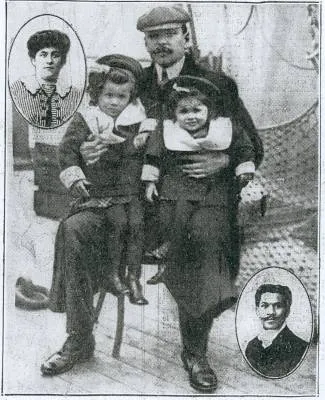Just who is Henri Christophe and what role did he play in Haitian history? In a previous installment of Haiti History 101, we had learned, oh faithful pupils, that Christophe was a slave-turned general, who became king. He built a fortress and several palaces during his lifetime. Let’s see what else we can learn about this historical figure.
1. He wasn’t born in Haiti, or Saint-Domingue, as Haiti was called during the French colonial period.
Christophe was actually born on the island of Grenada on October 7, 1767.
2. He worked in the hospitality industry.
He sure did! Henri Christophe a waiter and a cook at a hotel called La Couronne in modern day Cap Haitien—then known as Cap Français.
3. He was one of the leading generals during the Haitian Revolution.
The book Haiti, Her History and Her Detractors recalls how Christophe set fire to the city of Cap Français upon the invasion of the French Army expedition led by Vicomte Rochambeau. He was the Commander of the rebel army at the time.
According to Leger, as early as the days of Toussaint Louverture, Christophe’s abilities as a general was recognized by Toussaint himself.
4. He fought with Alexandre Petion for power.
The historian Jacques Nicolas Leger asserts that after the assassination of Haiti’s emperor Jacques I (Jean-Jacques Dessalines), Christophe and Alexandre Petion could not see eye to eye and their rivalry for power led to a series of battles between the two of them, that resulted in Petion’s near death and retreat.
Therefore, Haiti was split into two: the south was led by Alexandre Petion, and the north was ruled by Christophe.
5. He liked the British. He really, really liked the British.
Historians call him an Anglophile, and with good reason. He called himself Henry Christopher as opposed to Henri Christophe. He hired professionals from England to come to Haiti to teach in Haitian schools.
Christophe proved to be a big ally of England. Christophe discovered that some in the south of Haiti were in correspondence with slaves in Jamaica, and he handed the names of the slaves to the British government.
As a result of this, the British gave out an order in February 1807, permitting trade between selected ports in northern Haiti with England.
6. He made Haiti into a monarchy and made himself King Henry Christopher the First or Henry I.
In March of 1811, Henri proclaimed Haiti a monarchy, that had him as King Henry I, his wife Marie-Louise Coidavid as the Queen, his son Jacques-Victor Henry as the Prince Royal of Haiti. King Henry I also created a nobility, of lady knights, dukes, counts, and marchionesses and marshals and pages.

Haytian Papers: A Collection of the Very Interesting Proclamations and Other Interesting Documents—a compilation put together by Prince Saunders, a black American supporter of Haiti and King Henri—paints a picture of elegant Catholic Church ceremonies, lavish palace and garden parties and dinners given at Henry’s palaces—and of great sophistication.
Left: An engraving made of Christophe’s coronation in the eighteen century. (The Brooklyn Museum).
7. He wanted the Spanish part of Hispaniola to be rid of Spaniard rule, and be in union with newly-freed Haiti.
James Franklin, a British official, maintained that prior to Henri Christophe’s death, he had contracted an agency in London and was using the said agency to negotiate the purchase of the Dominican side of Hispaniola from the Spanish government.
Upon his death, the negotiations faltered according to both Franklin and Patrick E. Bryan author of The Haitian Revolution and Its Effects. In the book Industrialization and Imperialism, 1800-1914: A Biographical Dictionary Dennis Hidalgo contended that Christophe’s successor Jean-Pierre Boyer peaceful united the two parts of the island.
8. Under Henri Christophe’s rule, northern Haiti thrived.
King Henry I established The Royal Music Academy, a musical school, and an Art Academy. He built eight chateaus, including one for his wife Queen Marie-Louise, and nine palaces, including the San Souci Palace, as well as fortress called La Citadelle Laferriere. North Haiti had stable trade with England, and coffee was the Kingdom of Hayti’s primary export.
King Henri Christophe’s San Souci Palace as it looked decades after his death.
9. King Henri Christophe was anxious that the French would return and he was prepared for such a situation.
The aforementioned Citadelle Laferriere, complete with cannons, ammunition, and food storage houses, was designed as a stronghold for Haiti to fight off the French. As late as three months before his death, Christophe remained paranoid about the French returning and reclaiming Haiti.
For instance among the letters collected in the book Henry Christophe and Thomas Clarkson: A Correspondence is a July 20, 1820 letter from the British abolitionist and supporter of Haiti Thomas Clarkson soothing Christophe’s fears about the French recapturing Haiti.
Clarkson, however warned Christophe not to engage in any feuds with Jean-Pierre Boyer (who was now ruling the South of Haiti, following the death of Alexandre Petion) that might further divide Haiti and ease a French invasion of Haiti.
10. He left his wife the Queen Marie-Louise and his daughters the princesses Françoise-Améthyste, Athénaïse very rich ladies.
He had lots of gold stashed away in England—some sources say up to three million. Charles Dupuy maintains that after his suicide in 1820, Queen Marie-Louise and the two princesses were granted permission by Haiti’s new ruler Jean-Pierre Boyer to leave Haiti for England, where they went to claim the fortune.
From there, the former queen and the two princesses lived in Italy, never to return to Haiti. Queen Marie Louise (still according to Dupuy) had requested a passport to return back to Haiti, but died before Boyer could grant it.
Last Updated on December 2, 2025 by kreyolicious


